Best Shade Trees Northern California
If you are interested in planting shade trees suited to the climate in Northern California, our expert team has come up with a useful list that will give you the information that you need about the shade trees that may be best for your Northern California property so you can choose the most suitable trees.
- West Coast Live Oak
- Moringa Tree
- Lemon Eucalyptus Tree
- Rainbow Eucalyptus Tree
- Chinese Pistache Tree
1.West Coast Live Oak
Characteristic Features
- The West Coast Live Oak is known for its attractive display of blooming
- flowers, evergreen foliage, and a beautiful display of butterflies and birds.
- The West Coast Live Oaks are unique. You can plant these trees in any location and enjoy a distinctive look and no-hassle maintenance.
- It is a consistent yet slow-growing tree.
- These trees easily acclimatize to all types of areas.
- They don’t require fertilizer and receive water from the rain after the initial growing seasons.
Care Tips
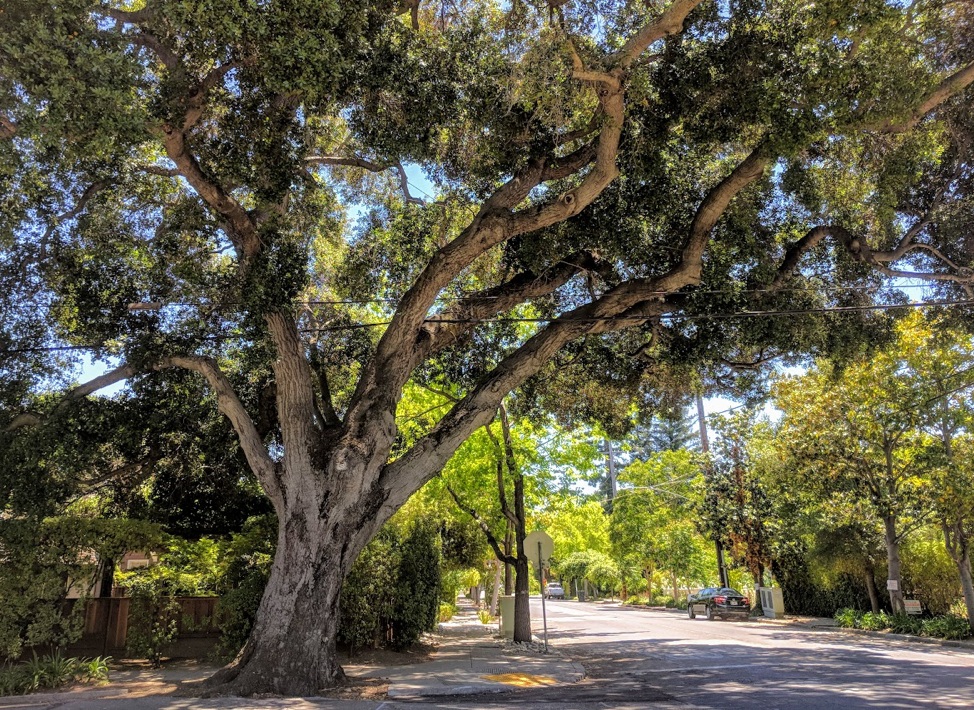
- Make sure the tree roots are covered by 3 to 4 inches of soil to prevent root damage and erosion.
- The cover soil should extend at least 6 feet from the trunk of the tree, or the roots may wrap around the tree’s trunk, which will smother the tree.
- Mature and young oak trees only require watering every 4 weeks. It is not necessary to water Live Oak trees in the winter months, since the rain in the winter is more than enough for your trees.
Benefits:
- Excellent firewood
- Can help turn your garden into a tree park
2.Moringa Tree
Characteristic Features
- Plant your tree indoors before the initial frost as this will dramatically reduce the chances of the tree dying. This is one of the reasons why many people prefer growing Moringas in pots.
- You can help Moringa trees to go dormant over the winter months by cutting the trees to stumps (2 to 6 inches).
- If your Moringa trees are outdoors during winter, place them along a west or south-facing wall or cover the tree to help it retain heat or warmth.
- Direct seeding may work, but it is important to know that Moringa saplings are attractive snacks for different types of critters. Starting the tree indoors over the first 7 to 9 weeks before transplanting will increase the chances of survival.
Care Tips
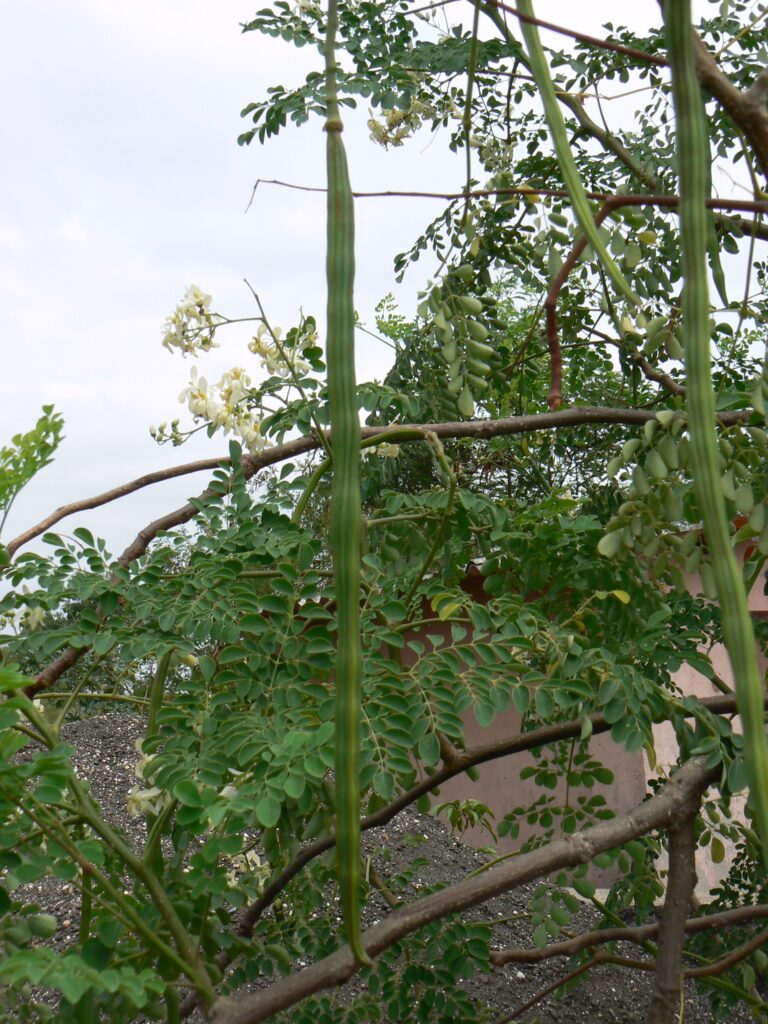
- Moringas need full sun. However, if you reside in an area that reaches temperatures of 120ºF or hotter, plant the tree in partial shade to help the tree survive really hot days. While these trees may be native to tropical areas, Moringas will get burned in dry and hot areas of Northern California.
Benefits
- Moringas are a high source of protein, beta-carotene, and potassium (along with many other vitamins).
- It is becoming a popular plant that is added to a variety of diets.
- The leaves can be ground into powder and then used as a highly nutritional supplement.
3.Lemon Eucalyptus Tree
Characteristic Features
- Your landscape or home with smell clean and fresh with the attractive scent that these trees emit.
- The all-natural lemony scent will help you gain many compliments from your guests and family.
- Even though these trees feature an inviting appearance, Eucalyptus trees actually keep pests away. Over and above repelling ticks, fleas, and mosquitoes, the leaves include citronella oil that can also help to deal with fungi.
- You can crush the leaves and use them as an effective way to keep bugs out of your home.
Care Tips
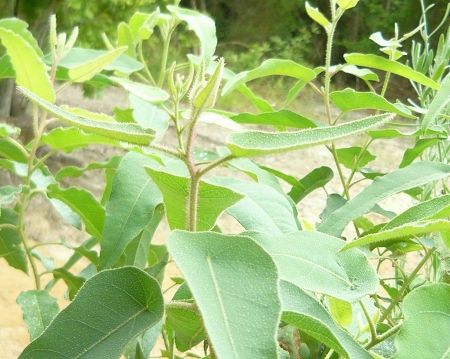
- These trees do well in all soil types, including soil that is nutritionally poor.
- Plant care becomes even easier if you plant a Lemon Eucalyptus Tree in soil that drains well.
- You will need to regularly water the tree over the first 5 years.
Benefits
- You can use the oil in the leaves as a natural insect repellant or medicine.
- Lemon Eucalyptus oil can be used to prevent deer tick and mosquito bites.
- Can be used to treat muscle spasms or for toenail fungus.
- Lemon Eucalyptus oil is also effective for joint pain or osteoarthritis.
- Kills germs.
4 .Rainbow Eucalyptus Tree
Characteristic Features
- Rated among the most beautiful trees in the world, the Rainbow Eucalyptus is unparalleled.
- The outer bark of the tree starts with a soft pastel green before deepening to red, orange, sunset pink, and pastel blue as the tree starts to age. Eucalyptus trees all have these multicolored distinctive streaks.
- Make a stunning outdoor or indoor statement, throughout the seasons, along with a fresh and clean eucalyptus fragrance.
Care Tips
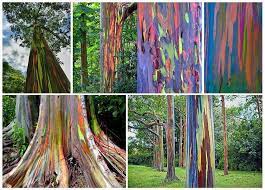
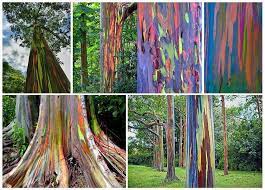
- For germination, the optimal temperature is around 90 degrees Fahrenheit. Sow your seeds in moist soil in a sunny location.
- Make sure the soil stays moist while you are waiting for germination (typically within 1 to 3 weeks). Transplant the seedlings outdoors once they are about 12 to 15 months old.
Benefits
Good for:
- Respiratory illnesses
- Oral hygiene
- Fungal infections
- Skin wounds
- Bronchitis
5. Chinese Pistache Tree
Characteristic Features
- These are ornamental shade trees that deliver dazzling shades of yellow, orange, and red in autumn. These are the perfect trees for those that love all those autumnal colors.
- Since they are grown in California, this is one of the best options for your outdoor spaces.
- The Chinese Pistache Tree produces dazzling displays that will last until December.
- The leaf buds start to appear between late March to the early part of April. From here the foliage starts to take on an attractive green hue.
Care Tips
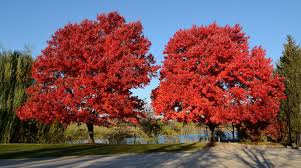
- For maximum growth, Chinese Pistache needs full sun.
- These trees can withstand downfalls of about -25 °C and are also one of the preferable options for warmer regions.
- Chinese Pistache prefers moist to dry soil. The texture of the soil should be sandy, loamy, or clay. The soil’s pH should be completely alkaline to slightly acidic.
Benefits
- The leaves, shoots, and seeds of the Chinese Pistache are edible. They can be roasted or cooked and they are also used in confectionaries.
- The wood of these trees is used in carpentry and to make furniture. The wood also gives off a bright yellow dye.
- The Chinese Pistache is used as the rootstock for the Pistachio Nut trees.
- The seeds produce an oil that is used as one of the biofuels in China.
Takeaways
If you own a home in Northern California, you have many species to choose from when it comes to planting trees for shade. With all the available options it may feel like a daunting task when it comes to making the right choice.
But you have nothing to worry about since the objective of our team is to help you explore your options when it comes to the Best Shade Trees that are bested suited to Northern California climates. For more assistance, call Bloom Tree Trimming Services today at (209) 285-2326
